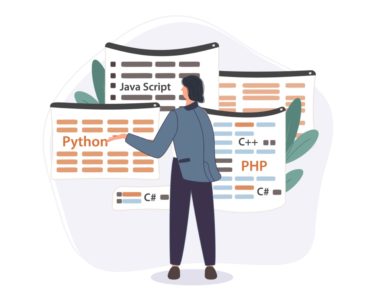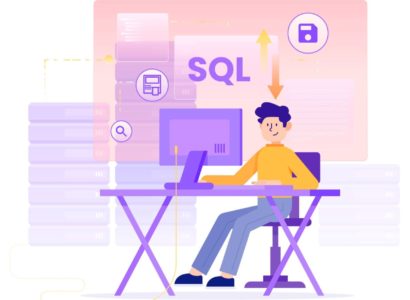Java Course Online
- 82k Enrolled Learners
- Weekend/Weekday
- Live Class
In the 21st century, Full Stack Web Development has undoubtedly transformed the internet. Notably, it is the driving force behind all the sites we see today, as well as mobile applications installed on our devices. Therefore, To succeed in web development, it’s important for anyone hoping to make a career out of it to understand and excel in the full stack developer skills required according to the current market trend. In this article, You will find out what you need to know about full-stack web development. Specifically, this article will give you clear insight into full stack developer skills, salaries, and jobs in the current market.
To gain in-depth knowledge of full-stack web development and to master full stack developer skills, you can enroll in a well-structured Full Stack Web Developer course developed by industry leaders, with 24/7 support and lifetime access.
A full-stack Web Developer is a developer or engineer who can develop both the front end and the back end of a website. In essence, with a line of code, a full-stack web developer can construct creative ideas from his mind on the computer screen.
Importantly, full stack developers are proficient in developing any web interactively and smoothly; they not only create a website but also ensure that it is performing well and is user-friendly. Therefore, front-end, back-end, and database management are the three basic technologies that one needs to be proficient in to become a successful full-stack developer.
| Front-end Developer | Back-end Developer |
|---|---|
| Direct interaction with users via the browser | Indirect interaction with users, typically through front-end |
| Primary focus on User Interface (UI) and User Experience (UX) | Primary focus on Server-side logic, databases, and application functionality |
| Code languages are HTML, CSS, JavaScript | Code languages are JavaScript (Node.js), Python, Java, Ruby, PHP, C#, etc. |
| Frameworks include React, Angular, Vue.js, Bootstrap, SASS | Frameworks include React, Angular, Vue.js, Bootstrap, SASS |
Next, let’s get started with the Full Stack Developer Skills. You need to be proficient in the List of skills mentioned below in order to become a successful Full Stack Developer

First and foremost, the basic skills of a full-stack web developer are HTML and CSS because they are the building blocks of web development, including developing and styling multiple web pages. Moreover, HTML (hypertext markup language) helps in structuring contents while defining some aspects like headings, paragraphs, or pictures, thus making sure each webpage remains organized and user-friendly enough to allow anyone who needs to visit it to get in. On the other hand, CSS (cascading style sheets) is a very important tool that assists in designing and improving the look of a site by controlling layout design, choice of colors, fonts, etc., as well as how responsive it is on different devices.
JavaScript lets people interact with the web application by changing the text and creating loops that can follow presentation patterns in web pages or animating parts of a page when necessary. The layout of the static content area is controlled via HTML, while dynamic elements are developed more actively with CSS styles only, except for JavaScript sometimes. Furthermore, today’s frameworks-oriented libraries depend on this language, like React or Angular, among others, that make intricate and lively sites possible.
Front-end Frameworks are collections of pre-written codes that help developers build the user interface(UI) and user Experience (UX) of a website. By using a framework in front-end development, developers can improve development efficiency, code quality, and application performance while also gaining access to a large ecosystem of resources and tools. This enables developers to build high-quality applications quickly and efficiently.
Front-end Frameworks used by developers are
After gaining experience in front-end development, it is time to move on to the next step to cover all the full stack developer skills.

To become a back-end developer, the first skill to master is a server-side programming language such as
Mastering any one of these programming languages is enough to start your journey with full-stack development (Node.js). Javascript is the most widely used server-side programming language
To simplify application development, proficiency in server-side frameworks and libraries is mandatory. Some of the back-end web frameworks are
Learning one of the back-end web frameworks is essential for the back-end development process because it makes the development process faster, more secure, and more well-organized. Developers widely use Express.js (Node.js) as the back-end web framework.
Learning API development is required in the back-end development process because it allows you to develop, implement, and consume RESTful APIs or GraphQL to enable communication between the server and client-side applications.
Some of the best APIs for development are:
Front-end developers need to know how to use version control. It helps them keep track of changes in their code, collaborate with other people, and ensure that their code is top-notch. When developers use version control, they can get more done, make fewer mistakes, and write better code overall.
Some of the best VCs are:
When working on any project, particularly as an app approaches its live launch, there are instances when the app may crash. This underlines the necessity for monitoring, which is the responsibility of full-stack developers. They must monitor application logs and server status and be equipped to tackle any unexpected crashes and resolve complexities, especially once the app is live. Additionally, there are five key benefits of using monitoring tools:
Infrastructure Monitoring: Keeping an eye on servers, containers, and more.
Performance Monitoring: Tracking metrics, logs, and log performance.
End-to-End Monitoring: Ensuring comprehensive monitoring across the entire environment.
Crash Prevention: Helping to avoid crashes and simplifying the resolution of complexities.
Analytics Monitoring: Allowing for the prediction and analysis of issues or requirements.
A method to execute that decides the success of any software can be termed back-end testing. Its main objective is to test the application or database layer to ensure that the specific software is free from any deadlocks and that data loss can be prevented. There are three categories of testing: structural, functional, and non-functional. Some of the best testing tools are:
Full stack developer skills also include technical expertise in architecture and design; it empowers them to build scalable, maintainable, high-performance applications that provide a seamless user experience and facilitate collaboration across the development team.
The full stack developer skills list does not just end here; some skills, apart from development, are required for database management, data security, memory allocation, authentication, etc.
Some of the general full stack developer skills include:
 The next skill on the list of full stack developer skills is database management. Databases are utilized in back-end engineering to store and process information. They help maintain data over time, manage vast flows of inquiries, and preserve data fidelity over time. Databases can be used to input information into systems, fetch it whenever required, change already existing data, or remove useful data that is no longer useful. Using queries to SQL language and back-end nodes that communicate with databases are essential aspects of this, which form the entire impetus.
The next skill on the list of full stack developer skills is database management. Databases are utilized in back-end engineering to store and process information. They help maintain data over time, manage vast flows of inquiries, and preserve data fidelity over time. Databases can be used to input information into systems, fetch it whenever required, change already existing data, or remove useful data that is no longer useful. Using queries to SQL language and back-end nodes that communicate with databases are essential aspects of this, which form the entire impetus.
Two types of databases are used in the development process –
Relational Databases:
Non-Relational Databases:
Web development relies heavily on a basic understanding of operating systems. This is because it allows developers to manage servers, configure development environments, and secure applications. The performance of an application can be optimized by knowing how the resources, such as CPU and memory, are allocated. Deploying and troubleshooting can be simplified with knowledge of OS commands and scripting, while cross-platform knowledge guarantees that several systems will present similar behavior for the same application. An understanding of the OS gives a developer a greater capacity to create good web applications that serve for a longer period without breaking down.
Cybersecurity is essential for web development; it makes sure that all web applications remain secure from any possible risks or weaknesses. The use of security principles can aid a developer in determining how to protect their data, prevent illegal access, and call for attacks like (SQL)-injection, XSS, or CSRF. Additionally, if developers incorporate best practices into their development processes, it will lead to more robust apps, more secure users, and trustworthy systems.
After acquiring all the required full stack developer skills, one moves forward and starts looking for jobs in full-stack web development. Full-stack development is growing rapidly in the tech industry, and the demand for skilled professionals in both front-end and back-end development has increased. Let’s examine the current jobs and career opportunities in this field.
| Job Role | Responsibilities | Salary |
|---|---|---|
| Full-Stack Engineer | Develops both the front-end (client side) and back-end (server side) of a website. | $80,000 – $140,000 per year |
| Full-Stack Web Developer | Develops and manages the entire web application. | $70,000 – $120,000 per year |
| Full-Stack Software Engineer | Creates programs from user interfaces to databases. | $85,000 – $150,000 per year |
| Full-Stack Architect | Monitors the design and architectural parts of full-stack solutions. | $110,000 – $180,000 per year |
| Junior Developer | Assists in developing software under senior developers’ guidance. | $55,000 – $75,000 per year |
| Associate Developer | Contributes to coding and debugging during the development cycle. | $55,000 – $85,000 per year |
| Back-end Web Developer | Creates server-side logic, manages databases, and handles servers. | $70,000 – $120,000 per year |
The dream is bright for full-stack web development because companies still put weight on seamless and integrated digital experiences. As technology such as artificial intelligence and cloud computing progress, the demand for qualified full-stack developers will remain on the rise. Knowledge of full stack developers skills like React and Node.js, as well as database and API integration skills, will become more useful than ever before. It is with diverse skills that full-stack developers will lead in the technological frontier, which drives innovation that produces new-generation websites.
Full-stack web development is an ever-changing and profitable area, possessing an all-encompassing skill set that reaches across both the front-end and back-end technologies. Firstly, familiarizing oneself with the basic life essentials such as HTML, CSS, JavaScript, server-side languages, and data management will prepare you to tackle a variety of challenges in the tech world. Given the increasing trend of multitalented developers, enrolling in Edureka’s full-stack development course can expose you to knowledge as well as practical experience that will enable you to outrun others. Additionally, acquiring the full stack developer skills mentioned above will increase your job opportunities and give you room to contribute towards ground-breaking digital solutions.
A full-stack web developer is an engineer proficient in developing both front and back end of a website. The basic skills that a full-stack developer should have include HTML, CSS, Javascript, front-end and back-end frameworks, and knowledge of database management.
To become a full-stack engineer, you must be conversant with both front-end and back-end technologies, gain good hands-on experience in key programming languages such as JavaScript, Python, or Java, and learn about database management and web frameworks, and even build real-world projects where you can demonstrate your practical skills.
Full stack developer skills include knowledge of front-end technologies like HTML, CSS, and JavaScript, as well as back-end development using Node.js, Python, or Java. A full-stack developer is also proficient in different types of databases, including SQL and NoSQL. They might use Git for version control and web frameworks like React or Django for building websites but will also have a basic understanding of APIs, server management, and some DevOps practices.
A Full stack development internship program helps you design both front and back end of web applications. Through practicals and trainer support, you will learn crucial skills such as HTML, CSS, and JavaScript, as well as server-side languages, including frameworks and database management.
There is a strong need for full-stack developers. Their versatility makes them invaluable to employers because they can tackle both the front-end and back-end components of any web application simultaneously. They have become prominent players in this field due to their vast knowledge and ability to perform multiple functions within one project.
 Thank you for registering Join Edureka Meetup community for 100+ Free Webinars each month JOIN MEETUP GROUP
Thank you for registering Join Edureka Meetup community for 100+ Free Webinars each month JOIN MEETUP GROUPedureka.co